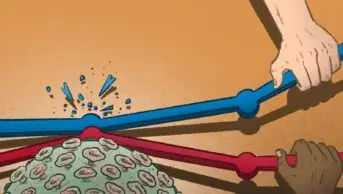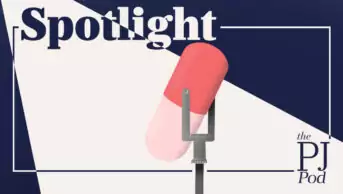
Mclean/Shutterstock.com
Disparities in the death rates for COVID-19 between ethnic groups, and the Black Lives Matter movement — spurred on by the killing of George Floyd by a policeman in the USA — have thrust the inequalities that black people face onto the national agenda.
These events should prompt everyone to reassess the inequalities that underlie society and do what they can to highlight where change is required — pharmacy included.
In the latest instalment of our #PJMindtheGap campaign, to highlight the social inequalities that exist in pharmacy, we publish the results of an investigation by The Pharmaceutical Journal into the potential disparities that exist within the pharmacy degree in the UK.
This uncovers, for the first time, national data which indicate that the proportion of black, Asian or minority ethnic (BAME) pharmacy students obtaining an upper class degree is 12 percentage points lower than their white peers.
The MPharm awarding gap is similar to the national average for all degrees, which was 13 percentage points in 2017/2018 according to Universities UK. As with national data, the gap is wider for some ethnicities; our analysis shows that, for black and some Asian ethnicities, the awarding gap for the MPharm is 15 percentage points.
These data are a starting point. The ethnicity awarding gap is not a perfect measure and such a crude metric cannot capture the complexity of this issue, or the intersecting issues, such as socio-economic status or gender. This is not about favouring one group over another, but about ensuring fairness for all.
However, this is not the only barrier faced by black people wanting to enter pharmacy. There is the long-running problem of the gap in performance in the preregistration exam, where there is a widening 30-percentage-point gap in performance between white and black students.
Despite a report published in 2016 by the General Pharmaceutical Council (GPhC) laying bare the reasons for this disparity, including explicit prejudice and “perceptions of implicit bias”, more needs to be done to correct this problem that has a powerful effect on the life chances of black graduates trying to enter the profession. For too long the buck has been passed, with responsible organisations too willing to blame others instead of looking at how they can address the issue themselves.
There is also the issue of representation. There have been some encouraging changes, with the UK Black Pharmacists Association leading the way on engaging with bodies such as the Royal Pharmaceutical Society and the GPhC on their policies regarding inclusion and diversity. However, there a distinct lack of black people in positions of power at national pharmacy bodies and teaching institutions.
This lack of visible role models has a corrosive effect on morale, and is often raised by BAME pharmacists and students as a barrier to feeling that pharmacy is an inclusive profession where they can play an active role.
Recently there have been some wide-ranging and enlightened policies and statements released by the Royal Pharmaceutical Society, the GPhC and the Pharmacy Schools Council, promising to tackle these issues. But words will not change the reality on the ground for black students, preregistration trainees and pharmacists.
It would be too easy for these inequalities to once again be lamented over, action promised and for nothing to materialise. Pharmacy bodies must publish clear timetables and meaningful goals for how they are going to address the inequalities that black pharmacists face. Transparency is key to ensure that pharmacy can seek to continually improve and make the profession a more welcoming and nurturing place for all those working in it, or who seek to enter it.
Read more: Making the MPharm fairer: what can be done about the ethnicity awarding gap?


